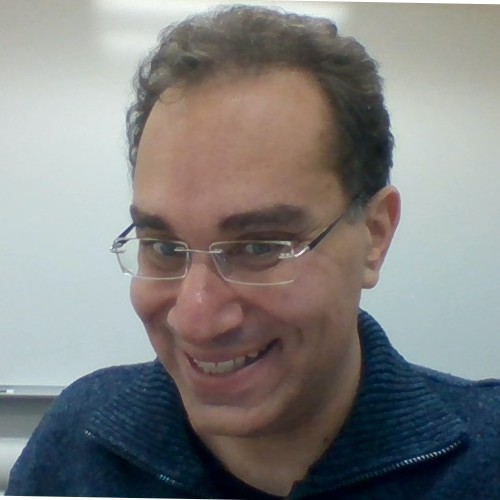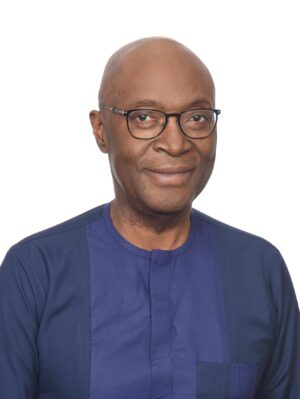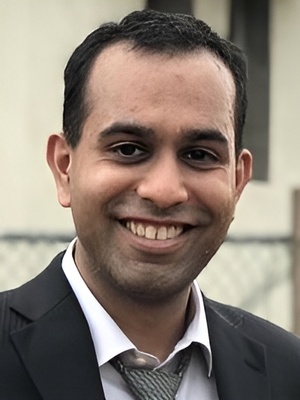KEYNOTES (TBA)
At the Edge of Everything: Unlocking Infinite Intelligence – Thursday, July 3rd, 9:00 AM
Burak Kantarci, Full Professor University of Ottawa

Abstract: As we accelerate into the era of 6G and hyper-connectivity, intelligence is no longer centralized. It is ambient, distributed, and increasingly agentic. This keynote explores how Edge Intelligence, Large Language Models (LLMs), and next-generation networks are converging to create a powerful new paradigm: a world where machines reason, adapt, and collaborate autonomously at the network’s edge. From the battlefield to the city street, intelligent agents embedded in edge environments are already transforming critical sectors. I will delve into recent advances, including LLM-powered autonomous defense vehicles, real-time multimodal traffic cognition systems, and language-model-guided network optimization. The audience will gain insight into how techniques such as prompt engineering, federated learning, and lightweight language models are enabling secure, low-latency decision-making without compromising trust or privacy. Drawing from real-world implementations and collaborative research, this keynote outlines a bold vision for the future: a seamless edge ecosystem that brings together distributed intelligence, multimodal data, and next-generation connectivity to support responsive and scalable AI solutions. The edge is no longer the edge. It is the origin of infinite intelligence.
Biography: Dr. Burak Kantarci is currently a Full Professor and the University Research Chair in AI-Enabled Secure Networking for Smart Critical Infrastructures, Faculty of Engineering, University of Ottawa, Canada. He is also the Founding Director of the Smart Connected Vehicles Innovation Centre (SCVIC) and the Next Generation Communications and Computing Networks (NEXTCON) Research Laboratory, University of Ottawa. He holds a Ph.D. degree in computer engineering from ITU in 2009. He is the author/co-author of more than 300 publications in established journals and conferences and 15 book chapters. His research has attracted more than 10,000 citations. He is a Senior Member of the IEEE and of the ACM. Continuously listed among the top-cited scientists in telecommunications and networking based on the data reported by Stanford University since 2020, and since 2021, based on data collected from Microsoft Academic Graph, research.com has listed him among Canada’s top computer scientists. He is a recipient of King Charles III Coronation Medal (Canadian Version), and was a recipient of the Minister’s Award of Excellence from Ontario Ministry of Colleges and Universities (2021) and the 2023 Technical Achievement Award of IEEE ComSoc Communications Software Technical Committee. He is also the winner of the 2024–2025 George S. Glinski Award for Excellence in Research in the Faculty of Engineering at University of Ottawa. He holds the Exemplary Editor Award from IEEE Communications Surveys and Tutorials (2021), and multiple best paper awards from various conferences, most recently from IEEE Globecom 2024, IEEE VCC 2023, IEEE ICC 2023, Wireless World Research Forum 2022, and IEEE Globecom 2021. He was a Distinguished Speaker of the Association of Computing Machinery (ACM) 2019–2021. He is also a Distinguished Lecturer of the IEEE Communications Society and the IEEE Systems Council. He has been a keynote/invited speaker or panelist in 40 events. In 2019 and 2020, he chaired the Communications Systems Integration and Modeling Technical Committee of the Institute of Electrical and Electronics Engineers (IEEE). He has been the general chair, the program chair, or the track chair of more than 30 international conferences. He is an Editor of the IEEE Communications Surveys and Tutorials and IEEE Transactions on Network Science and Engineering, an Associate Editor of IEEE Networking Letters and Vehicular Communications (Elsevier), a former Associate Editor of Internet of Things (2021–2024), and a former Area Editor of IEEE Transactions on Green Communications and Networking (2016–2021).
Multi-modality approaches for medical support systems: where we are and where we are going – Thursday, July 3rd, 2:00 PM
Salvador Garcia, Full Professor University of Granada, Granada, Spain

Abstract: In this speech we will describe the transformative impact of multi-modality approaches in healthcare. Traditional single-modality methods have long limited the scope of medical decision-making, but we are now at a turning point. The convergence of advanced technologies and diverse data sources has opened unprecedented opportunities to revolutionize patient care. This keynote will examine where we are today in the integration of multi-modality approaches, focusing on their role in enhancing disease diagnosis and prognosis. By fusing medical images, bio-signals, clinical records, and other critical data, these methods provide a holistic view of a patient’s condition, paving the way for truly personalized medicine. We will explore how multi-modality approaches enable a comprehensive patient profile, integrating genetic, imaging, and clinical data to inform precise, tailored treatments. Looking ahead, we will address the technical challenges in synthesizing heterogeneous data and highlight the emergence of deep learning as a groundbreaking tool for multi-modal integration. Together, we’ll uncover the possibilities and potential of multi-modality in shaping the future of medical support systems.
Biography: Salvador García received the B.S. and Ph.D. degrees in Computer Science from the University of Granada, Granada, Spain, in 2004 and 2008, respectively. He is currently a Full Professor in the Department of Computer Science and Artificial Intelligence, University of Granada, Granada, Spain.
Dr. García has published more than 130 papers in international journals (more than 95 in Q1), h-index 65. As edited activities, he is an Editor in Chief of “Information Fusion” (Elsevier), and an associate editor of “Swarm and Evolutionary Computation” (Elsevier), “AI Communications” (IOS Press) and “Machine Learning” (Springer) journals. He is a co-author of the books entitled “Data Preprocessing in Data Mining”, “Learning from Imbalanced Data Sets” and “Big Data Preprocessing: Enabling Smart Data” published by Springer. His research interests include data science, data preprocessing, evolutionary learning, deep learning and data-centric AI. He belonged to the list of the Highly Cited Researchers in the area of Computer Sciences (2014-2020): http://highlycited.com/ (Clarivate Analytics).
Career Insights on Machine Learning and Artificial Intelligence – Friday, July 4th, 9:00 AM
Michael Kounavis PhD, Software Engineer, Machine Learning and AI at Meta

Abstract: The talk will cover some career insights from the speaker in selected topics of Artificial Intelligence and Machine Learning. First, the problem of achieving ultra-low false positive rate computer vision will be discussed. It will be shown that the problem is still relevant and important and that it is difficult to fully solve. A design principle known as the object class intrinsic filter principle will be presented along with experimental data showing it can help reducing false positive rates to practically zero, in a contained computer vision problem. A number of innovations for enhancing the quality of the visual signal in computer vision pipelines will also be discussed. The next topic discussed is that of adversarial machine learning. The talk will cover algorithms and techniques for defending neural networks against attacks that have the form of subliminal signals, aiming to disrupt their cognition functions. The talk will offer an overview of the SHIELD technique, which has been proven capable of successfully mitigating a number of known attacks, and explain why the design of SHIELD borrows concepts from cryptography. The talk will end with a high-level overview of present-day large-scale recommendation systems.
Biography: Michael is a Machine Learning Software Engineer at Meta Platforms in New York, NY. Prior to this role, he served as a Senior Staff Research Scientist at Intel Labs, where he focused on cryptography, machine learning, and computer vision. He is a co-inventor of Intel’s AES-NI instruction set for accelerating AES encryption—an achievement that earned him an Intel Achievement Award in 2008. His contributions have significantly enriched Intel’s intellectual property portfolio, particularly in computer vision and machine learning. With approximately 80 technical publications and around 100 granted U.S. patents, Michael has established a strong record of innovation. Earlier in his career, he proposed the concept of programmable virtual networks (Spawning Networks, 1999), a precursor to modern Software Defined Network (SDN) architectures. This pioneering work became the basis for his Ph.D. thesis at Columbia University, which was awarded with distinction in 2004. In addition to his professional accomplishments, Michael is currently pursuing an Executive MBA at Villanova University.
From Clouds for 5G Systems to Clouds for 6G Systems: A Bumpy Road Ahead – Saturday, July 5th, 9:00 AM
Roch H. Glitho, Senior Industrial Research Chair Ericsson / ENCQOR, Full Professor, Concordia University

Abstract: Each generation of telecommunication systems brings additional levels of sophistication to the services offered to end-users. The Ultra Reliable Low Latency Communications (URLLC) services (e.g. remote robotic surgery) promised by the fifth-generation (5G) are compelling examples. They are a far cry from the Short Message Service (SMS) offered by the second-generation (2G), and the simple multimedia services offered the third and fourth generations (3G/4G). The deployment of 6G systems is expected for the 2030s, and much more sophisticated services (e.g. immersive holographic type – communications services) are expected. Clouds are the pillars of 5G and Beyond (5GB) due to the fact that features such as elasticity, scalability, and provisioning on-demand can successfully tackle the everlasting challenges such as lack of flexibility and over provisioning faced by telecommunication systems. 6G requirements are now known and are far more stringent than their 5G counterparts. Expected end-to-end latency for instance is now 0.1 milli-second instead of the 1 milli-second that is hardly met nowadays. Clouds for 5G will certainly fail when it comes to meeting 6G challenges. Thus, the need of a new generation of clouds for 6G. However, the road ahead from clouds for 5G to clouds for 6G will certainly be bumpy due to the numerous
challenges. In the first part of this keynote speech, we will introduce the expectations of 6G systems on clouds, and discuss why clouds for 5G cannot meet them. In the second part, we will sketch the research directions that may bring us to clouds for 6G. The third part will show that clouds alone will not be sufficient for 6G. It will be necessary to complement them by other paradigms. In-Network Computing (INC) is a good candidate. This is likely to bring us to a paradigm of “cloud-edge continuum enriched by INC” for 6G.
Biography: Roch H. Glitho is the Ericsson / ENCQOR Senior Industrial Research Chair in Clouds/Edges for 5G, and a Full Professor of Networking and Telecommunications at Concordia University, Montreal, Canada. In the past, he has held a Canada Research Chair at the same university, and has also worked as a Principal Researcher at Ericsson. He is a Fellow of the Canadian Academy of Engineering (CAE), and the Engineering Institute of Canada (EIC). He is the founding Editor-In-Chief of IEEE Communications Surveys and Tutorials journal, and has served as Editor-In-Chief of IEEE Communications Magazine and as IEEE Distinguished Lecturer. He is the inventor/co-inventor of several dozen patents (granted or under evaluation), and has widely published in areas such as cloud/edge/fog, 5G and beyond, Internet of Things (IoT), and Content Delivery Networks (CDNs).
Parallel Computing Systems Software for Science, AI and Beyond – Saturday, July 5th, 1:30 PM
Vivek Kale, Principal Member of Technical Staff, Sandia National Laboratories, California

Abstract: recent advances in computational methods for CSE and AI — such as computational drug discovery and LLMs — combined with new parallel computing hardware like GPUs, demand more than just parallel programming software (e.g., CUDA, MPI, Hadoop) to harness computing power for these applications. To ensure programmer productivity, parallel programming software relies on critical parallel computing system software — compilers, runtime systems, job schedulers — that enable performance, efficiency, and scalability, correctness, and resilience of the application. Moreover, as applications grow in complexity and computational demands evolve, applications require support of such system software across different parallel programming abstraction layers, from intra-node computation to cluster-level parallelism to cross-datacenter work orchestration. This keynote explores advances in system software frameworks that have enabled traditional scientific and emerging AI workloads. We will focus discussing systems software innovations across four layers of programming abstraction: (1) low-level parallel programming models (e.g. CUDA, OpenMP, MPI), (2) libraries for base-language-parallelism (e.g. Charm, Kokkos, C++ and Fortran StdPar), (3) Domain-Specific Libraries (DSLs) offering parallel programming (e.g. Triton, PyTorch, PetaBricks), and (4) AI agent and scientific workflow orchestration tools (e.g. NVIDIA’s AgentIQ, Pegasus). In doing so, we will share real-world parallel computing systems software from our research that has supported production workloads in science and AI at the Department of Energy (DOE), and we will discuss how such systems software used in the DOE has impacted systems software for today’s rapidly evolving computing needs to enable high-demand genAI in industry. We will close with a perspective of how current parallel computing system software will extend to emerging and future application domains such as robotics, blockchain, and other domains involving real-time computing systems.
Biography: Vivek Kale is a Principal Member of Technical Staff at Sandia National Laboratories—California, where he leads R&D of parallel computing systems software for science, engineering, and AI workloads vital to the United States Department of Energy. He earned his PhD in Computer Science from the University of Illinois at Urbana-Champaign in 2015, focusing on using intra-process load balancing to scale MPI applications. At Sandia, he oversees software development of GPU programming tools in support of Kokkos, a GPU parallel programming library widely adopted by Department of Energy’s science applications and that influences the new C++ StdPar library. He is specifically responsible for maintaining and driving development of the Kokkos Tools library’s infrastructure and capabilities, ensuring the library’s interoperability with MPI and cluster-level job schedulers, and influencing enhancements to Kokkos backend programming models such as OpenMP and CUDA to facilitate tooling for Kokkos. Over the past year, Vivek has concentrated on AI-assisted tools for Kokkos, particularly leveraging LLMs for source-to-source GPU program translation tools and developing ML-guided auto-tuning tools for Kokkos applications. Vivek has published over 40 articles in the area of HPC and parallel computing systems software, and he has served on multiple technical review committees for international CS conferences and journals. Furthermore, Vivek is active in open-source software standardization and governance efforts for parallel computing, in particular the standards committee for C++, MPI, OpenMP, and OpenACC, and the Linux Foundation’s High-Performance Software Foundation for Kokkos and Spack. Outside of work, he enjoys playing tennis competitively and playing pop songs on the piano.



